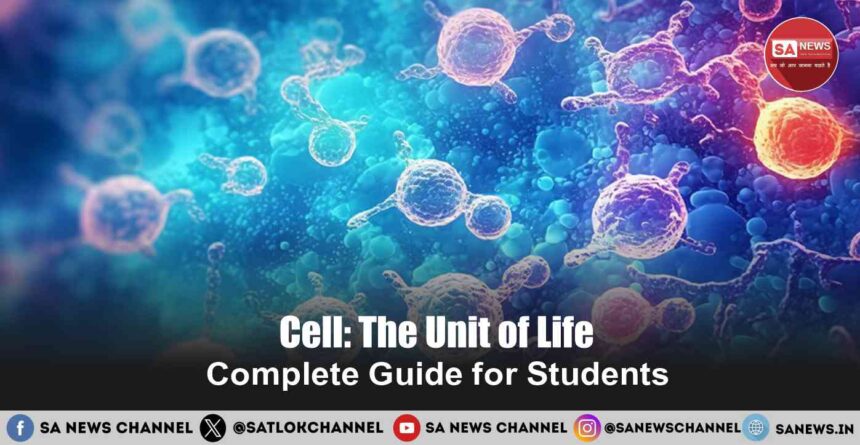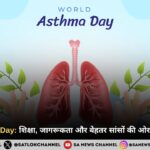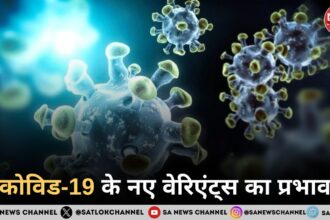Have you ever wondered what makes you, a tree, or even a tiny ant alive? The answer is cells! Every living organism, big or small, is made up of these tiny building blocks called cells. From tiny bacteria to massive elephants, cells are the basic building blocks of all living things.
In this blog, we will explore everything about cell structure, types of cells, functions of cells, and why they are so important.
What is a Cell?
A cell is the smallest unit that can live on its own and make up all living organisms and tissues. A living body cannot exist without cells. They perform essential activities like:
- Respiration
- Digestion
- Excretion
- Reproduction
Some living things, such as Amoeba, consist of a single cell, whereas humans have trillions of cells that function together.
Characteristics of Cells
- Self-sufficient: Cells can perform all basic life functions.
- Genetic Material: They carry DNA, the genetic code of life.
- Growth and Division: Cells can grow and divide to form new cells.
The Discovery of Cells
How Cells Were Discovered
In 1665, Robert Hooke observed a thin slice of cork under a simple microscope and saw small, box-like structures which he called “cells.” However, the cells he observed were dead. Later:
- Antonie van Leeuwenhoek observed the first living cells.
- Robert Brown discovered the nucleus inside the cell.
- Schleiden and Schwann proposed the Cell Theory.
Understanding Cell Theory
Cell Theory is one of the fundamental principles of biology. It states:
- Every living organism consists of one or more cells..
- The cell is the basic unit of structure and organization in organisms.
- All cells originate from existing cells, as suggested by Rudolf Virchow.
This idea emphasizes the crucial role of cells in living processes.
An Overview of Cell Structure
Cells have a complex structure made of different parts, each performing a special function. The main parts of a cell are:
- Cell Membrane: Protects the cell.
- Cytoplasm: Jelly-like fluid inside the cell.
- Nucleus: The control center.
- Organelles: Tiny organs performing specific tasks.
Types of Cells: Prokaryotic and Eukaryotic
Prokaryotic Cells
Prokaryotic cells are simple, small cells without a well-defined nucleus. Their DNA floats freely inside the cell.
Features of Prokaryotic Cells:
- No true nucleus
- No membrane-bound organelles
- Small in size
- Example: Bacteria, Blue-Green Algae
Prokaryotic Cell Examples:
- E.coli bacteria
- Cyanobacteria (blue-green algae)
Eukaryotic Cells
Eukaryotic cells are complex and larger. They possess a clear nucleus and several organelles.
Features of Eukaryotic Cells:
- Have a true nucleus
- Have membrane-bound organelles
- Larger in size
- Examples: Plant cells, Animal cells, Fungi
Also Read: Technology For Seniors: Is Technology The Real Answer To The Suffering Of Old Age?
Detailed Study of Cell Organelles
Let’s now explore the different parts of a cell and their functions.
1. Cell Membrane (Plasma Membrane)
- The cell membrane is a thin, flexible layer that surrounds the cell.
- Composed primarily of a phospholipid bilayer, along with proteins and carbohydrates.
- It is selectively permeable, allowing specific substances to enter and leave.
- Protects the cell’s internal environment and maintains homeostasis.
- Regulates the passage of nutrients, gases, and waste products.
- Helps in cell communication and recognition of signals from other cells.
2. Cell Wall (Plant Cells Only)
- The cell wall is a tough layer outside the cell membrane found in plants, algae, fungi, and some bacteria.
- Primarily made of cellulose in plants.
- Provides structural support, maintains shape, and offers protection from mechanical injury.
- Semi-permeable, allowing certain molecules to pass through.
- Prevents cells from bursting due to water intake (osmosis).
- Aids in cell-to-cell communication and tissue formation.
3. Cytoplasm
- The cytoplasm is a thick, gel-like liquid found within the cell membrane.
- Composed mostly of water, salts, and proteins.
- Houses all the cell organelles and acts as a medium for chemical reactions.
- Functions like a cushion, safeguarding organelles and holding them in place.
- Helps move materials via cytoplasmic streaming.
- Ensures even distribution of substances across the cell.
4. Nucleus: The Brain of the Cell
- The nucleus directs all cellular activities and is often called the brain of the cell.
- Enclosed by a nuclear envelope (double membrane) containing nuclear pores.
- Contains nucleolus (produces ribosomes) and chromatin (carries DNA).
- Stores genetic information essential for heredity and cell function.
- Regulates gene expression, growth, and reproduction.
- Communicates with cytoplasm by exchanging RNA and proteins.
5. Mitochondria: The Powerhouse
- Mitochondria are oval-shaped and have a double membrane.
- Inner membrane folded into structures called cristae to increase surface area.
- Convert food molecules into ATP (adenosine triphosphate) during cellular respiration.
- Play roles in metabolism, energy production, and apoptosis (programmed cell death).
- Contain their own DNA and ribosomes, enabling independent replication.
- Essential for maintaining cellular health and function.
6. Endoplasmic Reticulum (ER)
- The endoplasmic reticulum (ER) is a system of membrane tubes found in the cytoplasm.
- Two types:
- Rough Endoplasmic Reticulum (RER): Has ribosomes; synthesizes and packages proteins.
- Smooth Endoplasmic Reticulum (SER): Lacks ribosomes; synthesizes lipids, detoxifies harmful substances, stores calcium.
- Rough Endoplasmic Reticulum (RER): Has ribosomes; synthesizes and packages proteins.
- Acts as a manufacturing and transport system inside the cell.
- Works closely with the nucleus and Golgi apparatus.
7. Golgi Apparatus
- The Golgi apparatus is made up of flattened sacs called cisternae.
- Located near the ER and works in collaboration with it.
- Modifies, sorts, and packages proteins and lipids for delivery inside or outside the cell.
- Forms important structures like lysosomes and secretory vesicles.
- Completes the process by adding sugar groups to proteins (glycosylation).
- Acts like the post office of the cell, ensuring materials are delivered properly.
8. Lysosomes: The Digestive Bags
- Lysosomes are small sacs filled with powerful digestive enzymes.
- Break down waste materials, damaged organelles, and pathogens.
- Perform cellular cleanup and recycling to maintain cell health.
- Can initiate programmed cell death (apoptosis) to remove damaged or dangerous cells.
- Essential for defending the cell against infections and maintaining cellular hygiene.
- Help maintain a balanced and healthy internal environment.
- Also called as Suicidal Bags
9. Ribosomes: Protein Factories
- Ribosomes are tiny, dense particles composed of RNA and proteins.
- Located either freely in the cytoplasm or connected to the rough ER.
- Sites where proteins are synthesized by following DNA instructions.
- Join amino acids to create polypeptide chains that make up proteins.
- Found in both prokaryotic (70S ribosomes) and eukaryotic (80S ribosomes) cells.
- Essential for growth, repair, and enzyme production.
10. Vacuoles
- Vacuoles are membrane-enclosed sacs present in plant and animal cells.
- Plant cells have a large central vacuole that maintains turgor pressure.
- Store water, nutrients, ions, waste products, and sometimes pigments.
- Assist in preserving the form and framework of plant cells.
- In animal cells, smaller vacuoles are involved in storage and waste disposal.
- In unicellular organisms like Amoeba, contractile vacuoles help remove excess water.
11. Plastids (Plant Cells)
- Plastids are unique to plants and some algae, enclosed by a double membrane.
- Types of plastids:
- Chloroplasts: Contain chlorophyll for photosynthesis.
- Chromoplasts: Store pigments responsible for colors in fruits and flowers.
- Leucoplasts: Store starch, proteins, and oils.
- Chloroplasts: Contain chlorophyll for photosynthesis.
- Chloroplasts capture sunlight and convert it to chemical energy (photosynthesis).
- Plastids have their own DNA and ribosomes, allowing independent replication.
- Essential for storing and producing important biochemical compounds.
12. Centrosome and Centrioles (Animal Cells)
- The centrosome is a part of animal cells made up of two centrioles.
- Centrioles are cylindrical structures made of microtubules arranged in a 9+3 pattern.
- Help organize the spindle apparatus during cell division.
- Help ensure the accurate separation of chromosomes into daughter cells.
- Also involved in forming structures like cilia and flagella.
- Essential for the proper growth, reproduction, and structural integrity of animal cells.
Difference Between Plant Cell and Animal Cell
| Feature | Plant Cell | Animal Cell |
| Cell Wall | Present | Absent |
| Shape | Fixed (Rectangular) | Irregular (Round) |
| Plastids | Present | Absent |
| Vacuole | One large central vacuole | Small and many |
| Centrosome | Rare | Present |
| Lysosomes | Rare | Common |
The Amazing World of Cell Types and Shapes
Cells have different shapes and sizes based on what they do.
- Red Blood Cells: Round and biconcave to carry oxygen
- Nerve Cells: Long to transmit signals
- Muscle Cells: Long and elastic to help in movement
- Smallest Cell: Mycoplasma (0.3 micrometers)
- Largest Cell: Ostrich Egg
How Do Cells Work Together?
In multicellular organisms, cells are specialized. Different types of cells do different jobs:
- Muscle cells help in movement.
- Nerve cells carry messages.
- Skin cells protect the body.
They come together to create tissues, which build organs, and organs create organ systems!
Interesting Facts About Cells
- Human body has about 37 trillion cells!
- Bacteria reproduce much faster than human cells.
- Mitochondria have their own DNA.
- Cells can “talk” to each other through chemical signals.
Why Are Cells So Important?
Without cells:
- There would be no life.
- There would be no growth or reproduction.
- No organs, tissues, or organ systems could form.
Cells are truly the foundation of all life on Earth.
Final Summary: Cell Structure and Function
- The cell is the basic building block of life.
- Prokaryotic cells are simple, while eukaryotic cells are complex.
- Cells contain various organelles with specialized functions.
- In plants, cells have cell walls and plastids.
- In animals, cells have centrioles for cell division.
Understanding the structure and function of cells helps us understand how life itself works. Whether it’s the tiny bacteria or the mighty blue whale, it all begins with a simple, tiny cell.
The Deeper Meaning of Life Inside Cells – Wisdom from Sant Rampal Ji Maharaj
When we study cells deeply, we realize how complex, precise, and intelligent their design is. Every small part inside a single cell — whether it is the nucleus, mitochondria, or ribosomes — performs its role perfectly, without any mistake. This raises a very important question: Who designed such a perfect system?
According to the spiritual knowledge given, the Supreme God is the ultimate Creator of everything — from the smallest cell to the vast universe. Nothing in nature happens automatically or accidentally. It is all created, maintained, and controlled by God’s divine system.
Sant Rampal Ji Maharaj explains through scriptural evidence (like the Holy Vedas, Gita, Bible, and Quran) that A cell, which is like a small factory itself, cannot work without the Supreme Power behind it.
Each organelle inside the cell has a specific function, just like different departments of a company. Without supervision, the company would collapse — and similarly, without God’s constant control, life would not sustain even for a second.
Key Points from Sant Rampal Ji Maharaj’s Teachings about Creation:
- Every organism — from the tiniest cell to humans — is created by Supreme God Kabir Saheb.
- Cells themselves cannot create life. They only function because of the life-force (soul) given by God.
- Human beings cannot create even a single live cell from scratch, proving that science is limited and God’s power is infinite.
- The perfection inside the cell structure, division, DNA programming, and organelles’ function is a living proof of God’s unmatched wisdom and engineering.
- The Supreme God also controls the processes like cell division, healing, growth, and reproduction in all living beings.
Scientific knowledge like studying cells makes us appreciate the vastness of creation, but only spiritual knowledge reveals who the Creator is and what the true purpose of life is.
Sant Rampal Ji Maharaj teaches that by understanding both science and spirituality together, a person can live a complete and meaningful life. True salvation comes only by worshiping the Supreme God Kabir Saheb according to scriptures, while respecting the wonders of His creation like the cells
FAQs About Cells
Q1. What is the basic unit of life?
Answer: The cell is the basic unit of life.
Q2. Who discovered the cell?
Answer: Robert Hooke discovered the cell in 1665.
Q3. What are the main differences between prokaryotic and eukaryotic cells?
Answer: Prokaryotic cells lack a nucleus and membrane-bound organelles, while eukaryotic cells have both.
Q4. Which cell organelle is known as the powerhouse of the cell?
Answer: Mitochondria.
Q5. What is the function of the nucleus?
Answer: It controls the activities of the cell and stores genetic information









